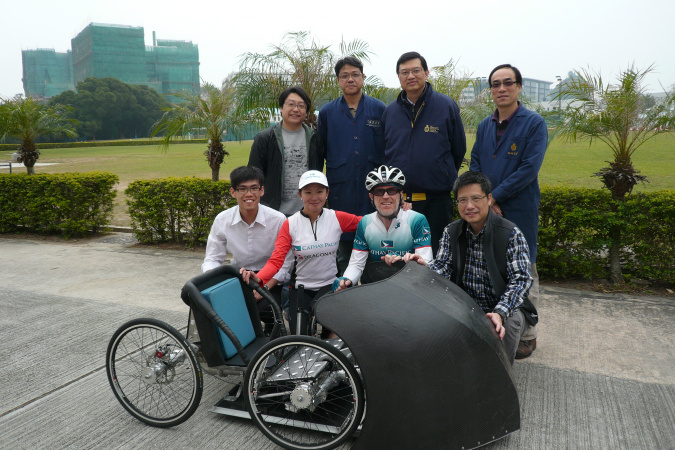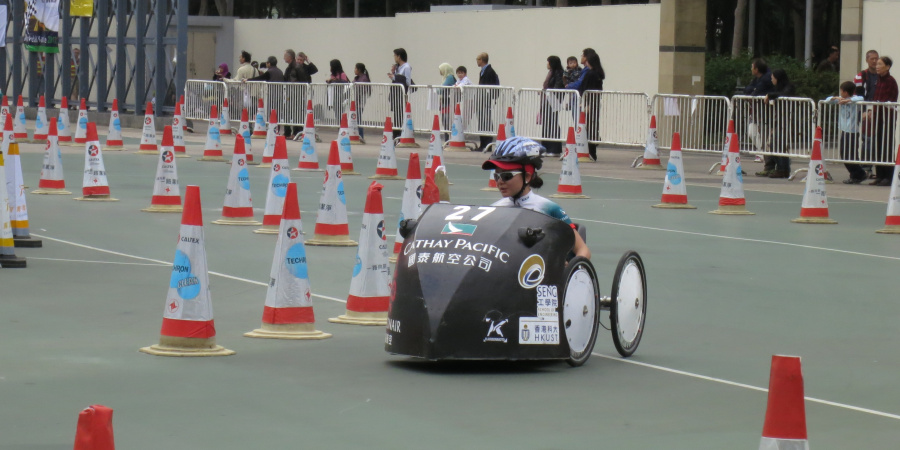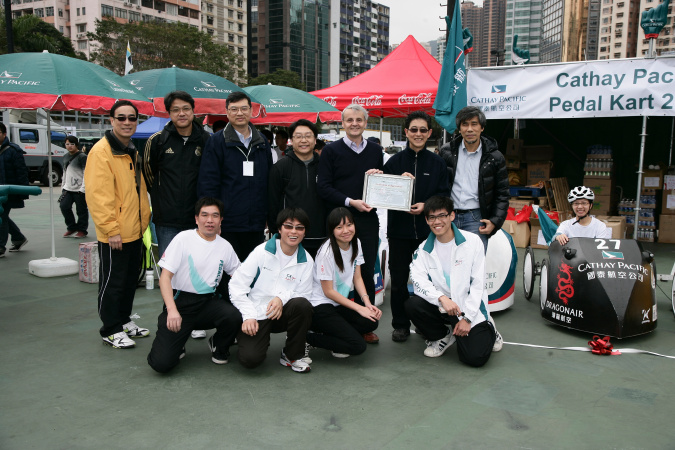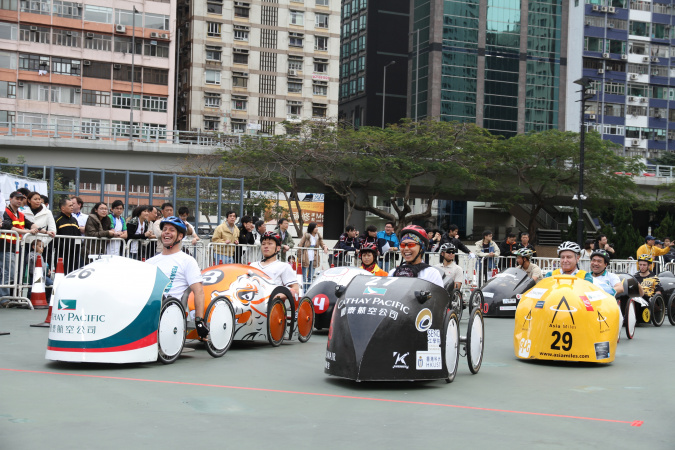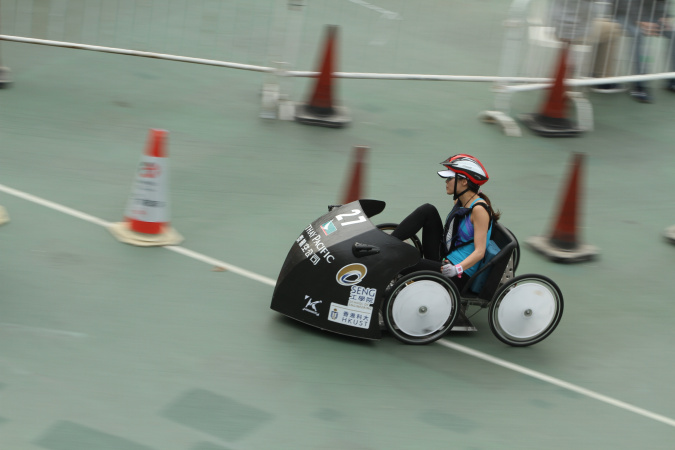HKUST-Designed Human-Powered Vehicle Won in Charity Race
A four-wheeled pedal kart designed and built by the Hong Kong University of Science and Technology’s Department of Mechanical Engineering for Cathay Pacific Airways to compete in the Hong Kong 24hr Pedal Kart Grand Prix has brought the airline a Race Winner Award in Ladies’ Division.
The winning kart was pedaled by “Cathay Angels”, the ladies’ team of Cathay Pacific. Team members finished a total of 778 laps (lap length 748m) in 24 hours in relay from 3pm last Saturday to 3pm last Sunday on a specially designed track in Victoria Park. The event aims to raise fun to local and regional charities and has been organized by the Association of Round Tables in Hong Kong since 1986.
The kart is a collaborative and dedicated effort of six staff members from the University’s Design and Manufacturing Services Facility (DMSF) for a period of 9 months. Investigation and prototype-building started in April 2011, followed by design and fabrication from June. Testing and fine-tuning take another 2 months, in November and December. Upon completion, the kart was successfully handed over to Cathay Pacific in January 2012.
The kart is designed with a number of special features. Ackermann geometric arrangement in the steering linkage, together with proper setting in Toe, Caster and Camber on the wheels alignment, helps to ensure good cornering and overall handling performance. Carbon fiber is used in making the fairing to reach a better weight-to-strength ratio. In addition, key components of the chassis are fabricated by the latest machining technology to achieve high resistance to distortion and twisting. Unique design in the rear wheel locking mechanism allows very quick wheels changing process.
To integrate this kart-building project into students’ training in practical mechanical engineering, an undergraduate final year project, supervised by Prof Kai Tang, was formulated for students to design and analyze various mechanisms in the kart. The team, comprising 5 mechanical engineering students, has been formed at the beginning of the 2011-12 academic year. The results of the students’ study will be useful in enhancing the performance and development of future karts.
This is the first time the Mechanical Engineering Department collaborates with Cathay Pacific on building a vehicle. The department expects more similar kind of collaborations to come in the future.
